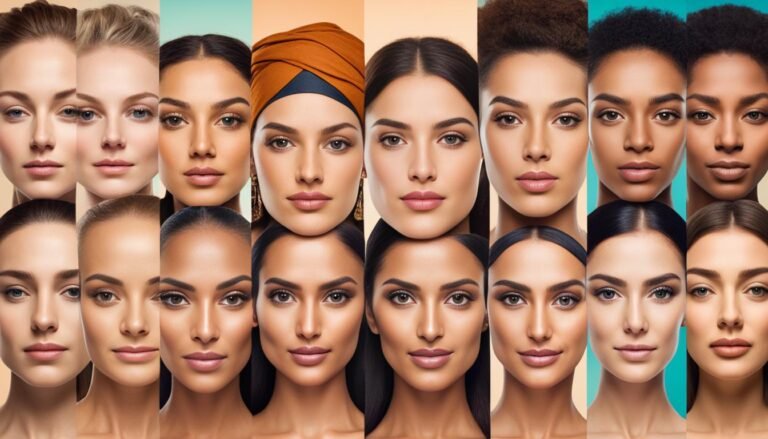Does skin tone affect job chances?
Have you ever wondered if your skin tone could impact your job opportunities? Surprisingly, studies have shown that skin tone bias, also known as colorism, can indeed affect one’s chances of securing employment. In a society where racial biases persist, it is essential to unravel the impact of skin tone on job prospects and address the underlying racial inequality in the workplace.
Colorism, a product of colonialism and white dominance, perpetuates the belief that lighter skin is more desirable and advantageous. This bias is not limited to external racial differences but also exists within racial and ethnic communities. Unfortunately, this preference for lighter skin disproportionately harms women of color, impacting their employment opportunities and career advancements.
Join us as we delve deeper into the effects of skin tone on job chances and uncover the ways colorism continues to shape our workplaces. Together, we can challenge common beliefs and strive for a more inclusive and equitable society.
Key Takeaways:
- Skin tone bias, otherwise known as colorism, can impact job opportunities.
- Colorism perpetuates the belief that lighter skin is more desirable and advantageous.
- Women of color are disproportionately affected by skin tone bias in the workplace.
- Challenging colorism is crucial for building inclusive and equitable workplaces.
- We must address the underlying racial inequality in hiring and employment practices.
The Impact of Colorism in the Workplace
Studies have shown that workplace discrimination based on skin tone, also known as colorism, continues to be a prevalent issue affecting job opportunities. Even individuals with superior qualifications and experience face disadvantages in job interviews and selection processes due to their darker skin. Research conducted at the University of Kansas revealed that darker skin color negatively influences employment prospects, particularly among male immigrants.
Employers often equate lighter skin tone with similarities to white individuals, leading to more favorable perceptions and comfort levels. This bias perpetuates racial discrimination in employment practices, creating barriers for individuals with darker skin tones to secure equal job opportunities.
“It is important to recognize the impact of colorism in the workplace. By acknowledging its existence, we can work towards dismantling racial discrimination and fostering a more inclusive work environment.”
Colorism not only affects adults but also manifests in children’s perceptions. Misconceptions that darker-skinned individuals are less educated persist, further exacerbating the challenges faced by individuals with darker skin tones in the job market.
Let us now examine data from the University of Kansas study, highlighting the impact of colorism in the workplace:
| Statistic | Darker-Skinned Individuals | Lighter-Skinned Individuals |
|---|---|---|
| Employment Prospects | Negatively influenced | Generally favorable |
| Perceived Similarity to White Individuals | Lower | Higher |
| Children’s Perceptions | Misconceptions of lower education | Limited misconceptions |
As evident from the data, workplace discrimination based on skin tone perpetuates racial inequality and hampers efforts to create a diverse and inclusive workforce. Addressing and disrupting colorism in hiring and employment practices is essential to promote equal opportunities and combat racial discrimination in the workplace.
Gendered Color Lines and Skin Tone Bias
The effects of skin color bias in the workplace are gendered. Darker-skinned men face greater disadvantages compared to lighter-skinned men within their racial groups, while the same bias does not significantly impact women’s employment prospects.
This gender disparity in skin tone discrimination can be attributed to the negative stereotypes and threatening images associated with darker skin. These stereotypes and perceptions may contribute to employers overlooking the qualifications and skills of darker-skinned men, reinforcing racial inequality in the job market.
It is important to acknowledge that the dynamics of colorism intersect with gender, shaping individuals’ life chances and opportunities. This intersectionality necessitates a deeper examination of the multifaceted ways in which race, gender, and skin tone influence employment outcomes.
As the racial composition of the United States becomes more diverse, it is crucial to broaden the understanding of race and color bias to address the challenges faced by individuals in the job market. By recognizing and addressing colorism in all its forms, we can work towards a more equitable and inclusive society.
Male Disadvantage in Racial Groups
“The disadvantages faced by darker-skinned men within their racial groups highlight the damaging effects of skin tone bias. This discrimination perpetuates racial inequality in the job market, as opportunities for career advancement become limited based on superficial qualities.”

| Racial Group | Disadvantages Faced by Darker-Skinned Men |
|---|---|
| African American | Darker-skinned African American men are more likely to face discrimination and limited opportunities for career growth, regardless of qualifications or experience. |
| Latino | Within the Latino community, darker-skinned men often encounter bias in employment, leading to restricted access to high-paying positions and professional advancement. |
| Asian | While colorism may be less prevalent within the Asian community, darker-skinned Asian men still experience challenges in accessing job opportunities and achieving career success. |
| Other Ethnic/Racial Groups | Similar patterns of discrimination based on skin tone can be observed across other ethnic and racial communities, further accentuating the racial inequality in the job market. |
The table above highlights the disadvantages faced by darker-skinned men within different racial groups. This data underscores the urgent need for employers to address and dismantle skin color employment discrimination.
Conclusion
Colorism in the workplace has a significant impact on job opportunities and career advancement based on skin tone. In order to foster a more inclusive and equitable work environment, it is imperative for leaders to confront and challenge colorism head-on. By prioritizing workplace diversity and inclusion, we can combat the negative effects of skin tone bias and create opportunities for individuals to thrive based on their skills and qualifications rather than their appearance.
Addressing the root causes of colorism requires collective effort and a commitment to dismantling discriminatory practices. It is crucial for everyone to be aware of the biases that exist and take active steps towards eradicating them in hiring and employment practices. Companies can play a pivotal role in promoting awareness, implementing anti-bias training, and adopting inclusive policies that celebrate and value individuals from all backgrounds.
Building a society that embraces diversity and values inclusivity requires ongoing commitment and sustained action. By challenging societal norms and perceptions that equate beauty and worth with lighter skin tones, we can create a workplace culture that recognizes and appreciates the unique talents and contributions of individuals of all skin tones. Together, we can create a future where career advancement is driven by meritocracy and individuals are judged based on their abilities and achievements, rather than biased assumptions based on skin color.






